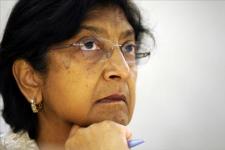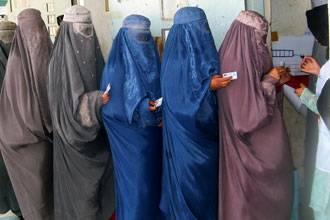More Women
 UN rights chief Navi Pillay called Monday for Muslim Gulf states to lift restrictions on women and to improve rights for millions of guest workers in the region.
UN rights chief Navi Pillay called Monday for Muslim Gulf states to lift restrictions on women and to improve rights for millions of guest workers in the region."Women in the region are still unable to fully enjoy their human rights," Pillay, the UN High Commissioner for Human Rights, said on the first stop of a six-nation tour of the Gulf.
"Discriminatory barriers continue to hamper women's right to shape their own lives and choices, and fully participate in public life and be part of public debates that influence the direction of a nation," she told a small gathering at King Abdullah University for Science and Technology (KAUST) north of Jeddah.
On her first-ever visit to Saudi Arabia, she said other Muslim states in the world have improved women's rights via "dynamic interpretations of Islamic traditions."
In those countries, governments and Islamic legal experts "demonstrated that far from being innovations, such legislation was compatible with Islamic jurisprudence and, indeed, stemmed from it."
She specifically cited the practice of requiring women to have a male guardian to move around outside the home, to appear in court and often to engage in business.
Click here for the full story:
Maktoob.com
Photo Credit:
AFP
Related links:
More About Women's Rights On AWR
 Alyson Myatt said her own safety never crossed
her mind.
Alyson Myatt said her own safety never crossed
her mind. IMAGINE you are one half of a young couple expecting your first child in a fast-growing, poor country. You are part of the new middle class; your income is rising; you want a small family. But traditional mores hold sway around you, most important in the preference for sons over daughters. Perhaps hard physical labour is still needed for the family to make its living.
IMAGINE you are one half of a young couple expecting your first child in a fast-growing, poor country. You are part of the new middle class; your income is rising; you want a small family. But traditional mores hold sway around you, most important in the preference for sons over daughters. Perhaps hard physical labour is still needed for the family to make its living. Where women really stand in Afghan society didn’t hit home to me
until I walked down a busy market street in Kandahar without seeing a
single woman.
Where women really stand in Afghan society didn’t hit home to me
until I walked down a busy market street in Kandahar without seeing a
single woman.
 For the first time in decades, researchers are reporting a significant
drop worldwide in the number of women dying each year from
For the first time in decades, researchers are reporting a significant
drop worldwide in the number of women dying each year from